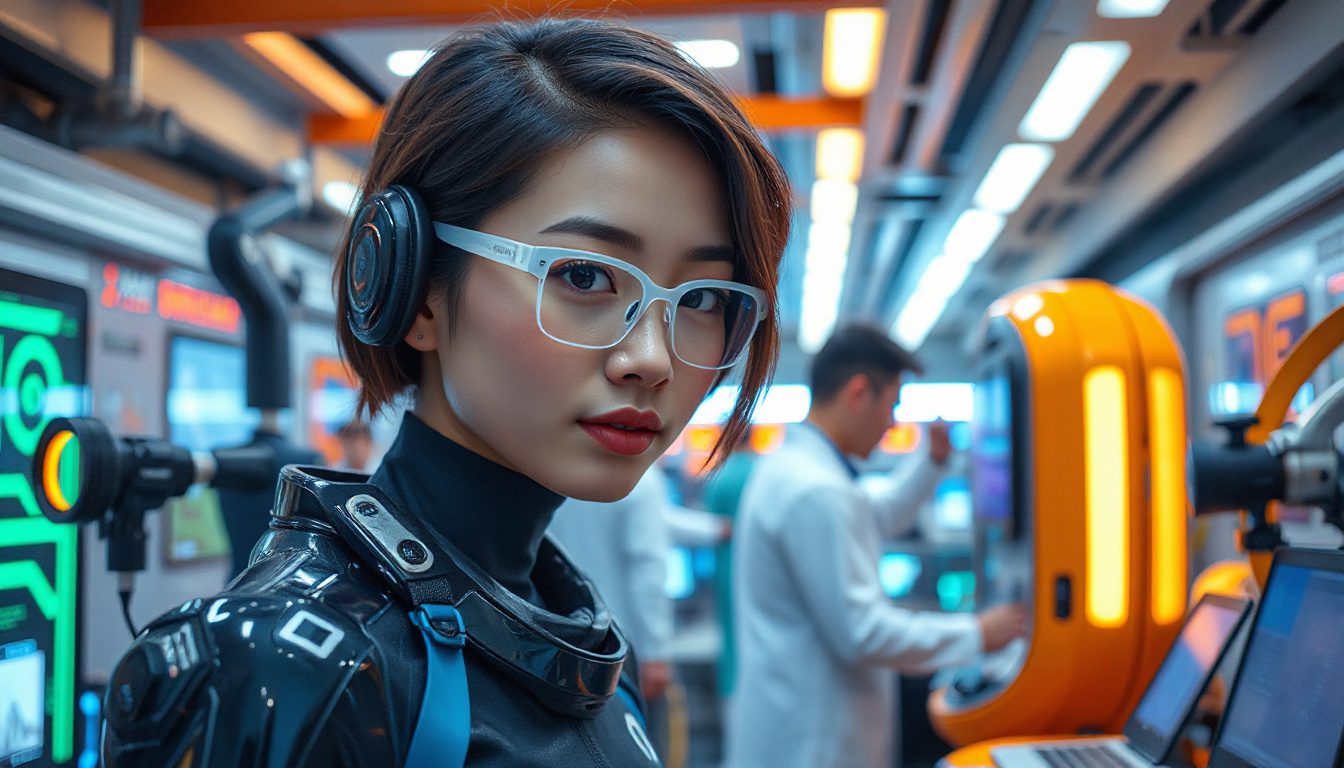How AI Is Transforming Visual Media, Medical Imaging, and Real-Time Video Analysis
Imagine you type a few words and get a wide, striking photo. Imagine a robot that sees the real world by using gameplay data. Imagine an AI that spots cancer in medical images. These ideas show AI at work today. Each word connects tightly to its neighbor to help you grasp how AI joins text, images, and videos to solve tasks in art, health, and tech.
Here is a look at some recent AI breakthroughs that connect creative vision with practical needs.
Creating Immersive Panoramic Images with AI
Image generators usually find it hard to craft wide scenes. They struggle to connect parts of a big image without losing detail.
A new AI model from Insta360, called DIT 360, uses smart methods to produce clear 360-degree images. Its design ties words and photos closely. This model can:
-
Text-to-Image Generation: You enter a brief description—say, a castle on a hill or a snug living room. The AI then creates a detailed panoramic image that measures up to 2048×1024 pixels.
-
Inpainting and Outpainting: If some parts vanish or you have a cropped piece, the AI quickly fills in gaps and expands the image. It connects pixels in a smooth way.
-
Real Estate and Design Applications: Interior designers and property experts can view many angles of a room or stretch the image to show more details. It helps with virtual staging and client talks.
-
Open Access for Testing: This tool is free to try online, and developers can run it on their own systems if they have the right GPU.
By linking ideas with pixels, this system saves hours of work and sparks new creative paths for photographers, designers, and marketers.
Understanding Camera Perspectives Through Unified AI Models
Another new tool learns how images work. It looks at a photo’s camera angle, view, pitch, and roll to build images that match real-life views.
An AI called Puffin binds vision, words, and camera data into one flow. It does the following:
-
Estimating Camera Settings: Given a photo, Puffin tells you the camera’s angle and setup. It connects camera hints to visible details.
-
Generating Images from New Angles: You can ask Puffin to change the view. It then builds a new image with a fresh perspective.
-
Constructing 3D Panoramic Maps: By joining images with their camera details, Puffin creates 3D maps or long panoramas that tie every part together.
-
Open Dataset and Custom Training: Developers work with a large set of 4 million samples. They connect text, photos, and camera data to train their own models in camera physics and spatial sense.
This united approach mixes 2D images and 3D views. It serves areas such as virtual reality, film making, and robotics.
Real-Time Video Understanding with Stream VLM
Breaking down a video frame-by-frame is hard and slow. New AI techniques now let machines watch videos like we do and quickly tell the story.
Stream VLM is built for live video work. It shows these traits:
-
Real-Time Processing: It works on up to eight frames each second on one H100 GPU. It handles long clips and live streams in one go.
-
Contextual Memory: Using a method that reuses past data, it keeps track of earlier frames. This makes the video’s story clear without treating each snapshot separately.
-
Narration of Complex Footage: The AI speaks about live sports, tracking plays, player moves, and ball motion. It can cut highlights, help coaches, or even provide video help for people with vision issues.
-
Open Source Code: The model’s code is open to researchers and developers. They can test it and change it to fit new video tasks.
This tool will impact TV, surveillance, and any case where a quick read of video matters.
AI Progress in Medical Imaging
Outside art and tech, AI makes big moves in health care. Google has built a system that spots tumors in scans with a sharp eye. It connects many data points for a faster and steady check than usual methods.
Its benefits include:
-
Better Accuracy: With many medical images in its training, the AI spots small signs that a human might miss.
-
Speed: It reads scans fast, giving help for quick treatment.
-
Consistent Checks: By following the same rules each time, the machine reduces mistakes from tired eyes or varying skill levels.
The open code around these systems spreads their use. Hospitals with fewer tools can gain access to strong systems for diagnosis.
Applying AI to Robotics and Interactive 3D Worlds
Some AI tools show how game-trained models can leave the screen and help real robots. These models give machines the sense to understand and move in their space. Also, AI can build 3D worlds that change with each user move, letting games and training tools come to life.
This mix of gaming, robotics, and AI proves how many fields can join together to create new paths forward.
What These Developments Mean for You
-
Creative Professionals: Tools such as DIT 360 and Puffin bring new ways to build images and see projects without deep technical work.
-
Developers and Researchers: Open models and large datasets help you experiment with camera views, video narration, and 3D mapping.
-
Healthcare Providers: AI systems that find tumors can help spot issues early and guide care plans.
-
Tech Users and Hobbyists: Built-in tools in common platforms now bring strong AI functions into daily life.
If you want to try these AI tools, many projects share free code and online demos. Whether you choose to boost creative work, shape smarter robots, or support better health checks, the field keeps moving fast to match many needs.
Next Steps to Explore These AI Tools
- Test the panoramic model like DIT 360 on free online sites.
- Try a model that reads camera views by using available image datasets to build 3D maps.
- Run Stream VLM on your computer if you have the right hardware.
- Keep up with AI in medical images, and see how they might join your health solutions.
Each step connects new ideas with practice. Explore and adapt as these tools grow, and see how close connections between words and pixels can shape the future.


